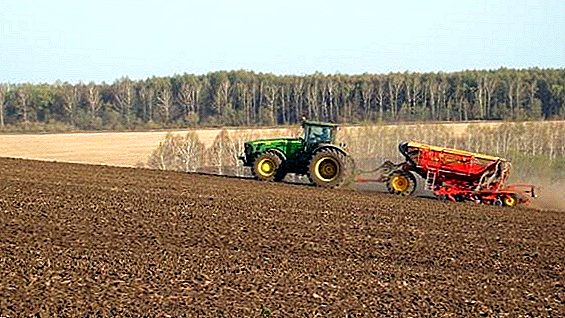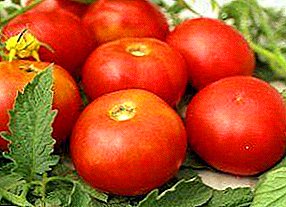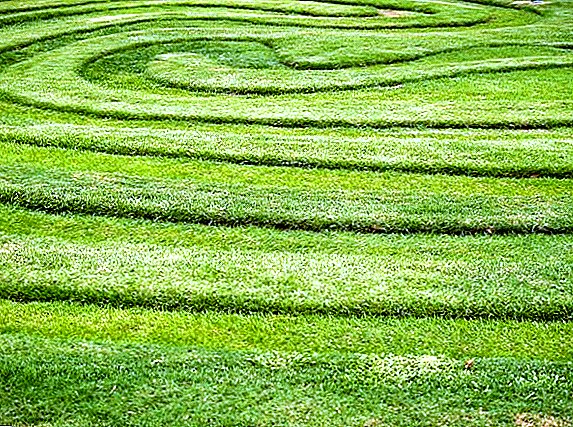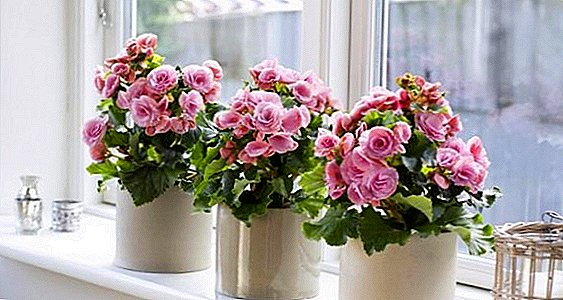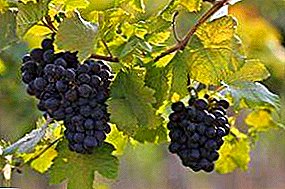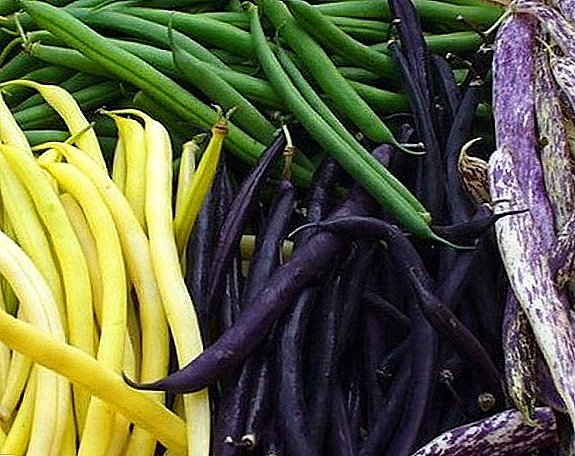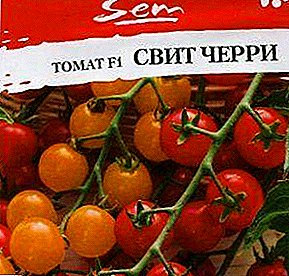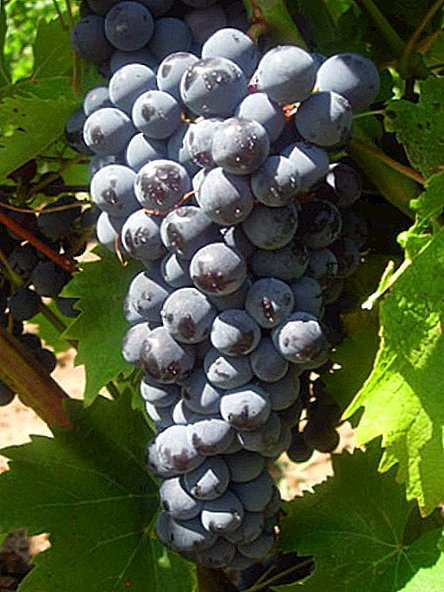 Many small private farms and large farms are breeding rabbits of meat breeds. For this branch of animal husbandry, the quality of the cultivated breed, such as a quick weight gain, is very important. This property is fully possessed by the hybrid French breed of rabbits, chicol.
Many small private farms and large farms are breeding rabbits of meat breeds. For this branch of animal husbandry, the quality of the cultivated breed, such as a quick weight gain, is very important. This property is fully possessed by the hybrid French breed of rabbits, chicol.
Description and features of the hybrid
The breed Jikol is valued for rapid weight gain, so the main goal of breeding these rabbits is dietary meat of excellent quality. Eared youngsters gaining up to 50 g of weight per day. The usual meat output at slaughter is just over half the total weight of the rabbit.  When breeding this breed, the livestock breeder must be prepared for the fact that problems will arise during natural reproduction. To preserve the purity of the hybrid line, it is necessary to apply only artificial insemination, which requires serious expenses, therefore it is more profitable to breed these rabbits in large farms.
When breeding this breed, the livestock breeder must be prepared for the fact that problems will arise during natural reproduction. To preserve the purity of the hybrid line, it is necessary to apply only artificial insemination, which requires serious expenses, therefore it is more profitable to breed these rabbits in large farms.
Did you know? Rabbit brood usually consists of 10-12 cubs, which are born after a short 30-day gestation. Males are ready for breeding at the age of seven months, and females - by 4 months. This means that in one year the female rabbit can theoretically produce up to 800 heads of offspring.
Inference history
The rabbits of the chikol breed are a hybrid, obtained as a result of selection works of French biologists. To this day, the French company "Hipfarm" retains a monopoly on the breeding of this breed. The company has branches selling these animals in various countries of the world.
Standard
Jikol rabbit fur coat is painted in light colors: usually these are the variants of white, gray and beige. Coloring of fur colorpoint also happens: this is when the hair on the ears and nose has a darker color than the entire fur coat.  Breed standard:
Breed standard:
- body length 50-54 cm;
- body weight 4.5-5 kg;
- a small head sits on a short neck;
- nose slightly elongated;
- the back is wide and flat;
- the back of the body is much larger than the front;
- eye color - red with a bright rim;
- eyes set wide apart;
- the belly is lowered;
- front legs short and wide apart;
- tail short and straight, tightly pressed to the body;
- short ears (up to 11 cm), pubescent on one side.
Check out the best decorative and downy breeds of rabbits.
Advantages and disadvantages
Hikol is a very popular broiler breed among rabbit breeders, as it has obvious advantages:
- quick weight gain;
- excellent yield of meat after slaughter (60% of total body weight);
- undemanding to care.
 The disadvantages of the breed can only be attributed to the impossibility of natural reproduction without loss of hybrid qualities. Purity of the breeding line can be achieved only with artificial insemination. When males and females cross the chicol breed, the purity of the breed is lost after 2-3 generations.
The disadvantages of the breed can only be attributed to the impossibility of natural reproduction without loss of hybrid qualities. Purity of the breeding line can be achieved only with artificial insemination. When males and females cross the chicol breed, the purity of the breed is lost after 2-3 generations.Maintenance and care
In order to get high results, the rabbit breeder needs to provide the most favorable conditions for keeping furry pets: spacious and warm cages, dry bedding, well-balanced nutrition. It is important not to forget about timely vaccination, because these animals are easily infected with viral diseases.
Did you know? Rabbits have extremely strong hind limbs that allow them to jump far and high. These animals jump above half a meter from the ground and in one jump overcome a distance of up to 1.2 m.
Selection and arrangement of cells
When keeping rabbits of a given breed in cages, the following requirements should be considered:
- Rabbit jikol contain in cells with a lattice bottom. Since the paws of the animal are well trimmed, the slatted floor will not harm them. The bottom in the form of a grid or a grid will make cleaning the cage easier, as it freely passes the rabbit waste. The cages are made of wood or metal, the latter is preferable, since rodents in a couple of years make the wooden parts of the cage unusable.
- The bottom is covered with dry straw, which is changed to fresh 2-3 times a week. As a litter, you can also take sawdust trees not resinous rocks. The litter should be hygroscopic and warm.
- Rabbit cells can be placed in several tiers - one above the other. At the same time, it must be remembered that in no case should the lower cages be placed on the ground or the floor of the rabbitcher; there must be legs or goats under them (at least 40-50 cm high). This is necessary to create an air gap between the cold air near the floor and the bottom of the cage.
- The size of the cages for rabbits with brood: the length of the house is from 175 to 185 cm, the width is up to 1 m, the height is 55-70 cm. Rabbits should have enough space for free movement. A wooden "maternity ward" is installed in the rabbit houses in front of the okol: a small wooden box with an opening for entry. A few days before the chopstick, the female pulls out the fluff from her fur coat and covers the bottom of the box with it, which she prepares for the kids a warm and soft bed. When the time comes around, the rabbit moves to the maternity hospital, where babies are born. They will live there until they grow up.
- Males usually gain body weight up to 5 kg, so each will need an individual cage up to 130 cm long, up to 80 cm wide, up to 60 cm high.
- When a group keeps several animals in one cage, its dimensions are calculated as follows: for one rabbit, the rabbit length is 1 meter, width and height is 60 cm.
- The rabbit cage should have a built-in hay compartment. Usually, the dry grass feed compartment is located on the outside of the cage so that the rabbits can easily eat dry grass, but they can not scatter the feed around the cage.
- For grain and feed inside the cage, trays firmly fixed to the side walls are provided. From the bottom of the cage to the feed tray, a distance of 20 cm is provided, this prevents the animals from defecating in feed trays.
- Drinking water tanks are fixed on the inner side wall of the cage at some distance from the bottom (15-20 cm), so that the animal can drink without standing up on its hind legs.

Conditions of detention
In the summer, rabbit cages can be installed both outdoors and indoors. It is important to choose places that are protected from the cold northern winds and drafts. It is also unacceptable to hit the roof of the cage in direct sunlight, as animals will suffer from heat in the summer.
Important! The bunny rabbit bears offspring from 28 to 31 days and is immediately ready to mate and fertilize immediately after hatching. Artificial insemination is usually carried out within 1-3 days after birth, and the rabbit is again taken to bear babies.
For the winter, the cells are transferred to a well-insulated room. The most optimal temperature for the content of this hybrid breed is + 20 ... +23 ° C. It is undesirable to allow the thermometer to fall below + 16-17 ° C, especially in winter. Males-producers are kept in single cages, rabbits live in a team of two or three individuals in one cage.
Care and hygiene
The room in which the cells are located is ventilated daily. A day later, the cells are cleaned of feces and change the dirty litter to dry. Once a month the cells need general cleaning and disinfection. To do this, they are temporarily freed from the inhabitants, after which they are cleaned and washed using detergents and disinfectants.  Mandatory disinfection is also carried out in May, during the start of the mosquito flight. During this period, female mosquitoes spread infectious diseases that are dangerous for rabbits, therefore, to scare away these insects, all surfaces of the cells are greased with tar or with engine oil.
Mandatory disinfection is also carried out in May, during the start of the mosquito flight. During this period, female mosquitoes spread infectious diseases that are dangerous for rabbits, therefore, to scare away these insects, all surfaces of the cells are greased with tar or with engine oil.
Did you know? Rabbit hearing is in the same range as humans, but they can also hear higher frequency sounds than those available to humans. Rabbit ears serve as sound locators and can move independently of each other — a function that rabbits use to determine where the sound comes from.
Vaccinations
All rabbits in the farm are vaccinated against myxomatosis and viral hemorrhagic disease. This may be one general vaccination against both diseases or different vaccines for each of the diseases. 
The scheme of vaccination of rabbits from viral hemorrhagic disease:
- The first vaccination - in full 6 weeks, when reaching a body weight of 0.5 kg.
- The second vaccination is carried out 3 months after the first. It is needed to consolidate the resulting immunity.
- All subsequent vaccinations are carried out at intervals of six months.
Read also about such meat breeds of rabbits as: Soviet chinchilla, white giant, Viennese blue rabbit, Rex rabbit, Butterfly, Californian rabbit, Flandre and New Zealand rabbit.
The scheme of vaccinations of rabbits from myxomatosis:
- The first vaccination is carried out in the spring, the minimum age of the animal being vaccinated is 4 months.
- The second vaccination - animals vaccinated 4 weeks after the first vaccination.
- The third vaccination - the rabbit is injected vaccine 5-6 months after the first vaccination.
- All subsequent vaccinations of vaccinated animals are held twice a year (in early spring and late autumn).

Other viral diseases dangerous to rabbits.
Pasteurellosis, salmonellosis (paratyphoid fever), rabies and listeriosis: newly purchased animals are vaccinated against these viruses in the first days after their acquisition with the help of complex vaccination. When using single-component vaccines against each of the diseases, at least 14 days must pass between vaccinations.
Did you know? Myxomatosis is the first biological weapon applied against the whole species. In 1950, this virus was launched among Australian rabbits, which by this time had become a national disaster, as they ate all the grass, leaving nothing for other animals. As a result of the genocide, the number of rabbits in Australia has drastically decreased, and myxomatosis has spread to other parts of the globe, so it is almost impossible to raise rabbits without vaccinations against viral diseases.
What to feed
In the cages should be installed trays for food and drinkers, rabbits should always have free access to them. Troughs always remain filled with food. Water in drinking bowls is changed twice a day. Each individual can "eat" up to 50 times a day. These broilers are unpretentious in food and are happy to absorb all the proposed feed.
Summer
In the summer, a fresh, slightly dried green mass of legumes, dandelion greenery, and prickly thistle are included in the rabbit diet. Bean cultures are necessarily fed, their use reduces the need for granulated feed, and thereby reduces the cost of cultivation.  For 10 kg of green stems of leguminous crops, there are 25 g of highly digestible protein. Animals willingly eat: fresh, previously thoroughly washed vegetables (carrots, sugar beet and table), grain, corn and balanced feed.
For 10 kg of green stems of leguminous crops, there are 25 g of highly digestible protein. Animals willingly eat: fresh, previously thoroughly washed vegetables (carrots, sugar beet and table), grain, corn and balanced feed.
Important! In the summertime for rabbits, chicol necessarily harvested hay. The best time for procurement falls in June-July. At this time, the grass is most saturated with protein and has the highest nutritional value.
In winter
In winter, the animals feed on a variety of feeds: they eat dry grass, boiled and fresh vegetables, grain (corn, barley, wheat). A prerequisite for a good weight gain for broilers is an addition to the daily ration of granulated feed.
Fresh vegetables, such as beets and carrots, should be present daily in the feed. In winter, this need is due to the fact that juicy feeds of rabbits partially quench their thirst. Drinking water consumption in drinkers at this time of year is much less than in summer. 
Breeding young stock at home
The hybrid characteristics of this broiler breed of rabbits are preserved only by artificial insemination. For this procedure, only biological material (semen), purchased at the offices of the company Hipfarm, is suitable. All attempts to breed this breed by natural mating and fertilization failed. During such attempts, it was found that in this case the offspring are deprived of the characteristics of the breed.
Did you know? In the wild, rabbits live in burrows, creating a complex series of underground tunnels with several entrances and exits. The rabbit family of several females and the male has its own hierarchy, where the main female dominates. In the cage where the males live, a hierarchical order also forms. The dominant male enjoys many advantages. He gets the best place, starts eating first and is aggressive in attempting to dominate.The maintenance of meat breed of rabbits chicol is a very profitable occupation. This was the reason for the increased popularity of the broiler hybrid in the industrial breeding of rabbits. It is advisable to acquire breeding producers or young animals for breeding at breed exhibitions, in nurseries or from official representatives of the Hipfarm company.


